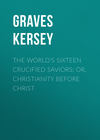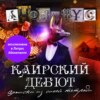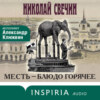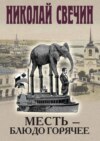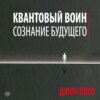Читать книгу: «The World's Sixteen Crucified Saviors; Or, Christianity Before Christ», страница 2
Those imperfections correspond exactly to the imperfect minds which produced it.
7. And we believe that the principle teacher of Christianity, "the man Christ Jesus," possessed a very exalted and superior mind for that age in the moral and religious departments, and in the intellectual to some extent also. But his superiority in these respects was not probably greater than that of Zera Colburn or Henry Salford in the mathematical department. And all probably derived their peculiar extraordinary traits of mind from the same causes – that of strong psychological influence impressed upon the mind of the mothers prior to their births. Had these ante-natal influences been as well understood then as now, we presume Christ would have escaped the fate of an exaltation to the Godhead.
[The author, stating the above, demonstrates that same assumption of a truth which he criticises in the Christians, Mohamedens and other proponents of religions. Ed.]
8. In conclusion, permit us to say that the numerous and overwhelming facts of this work render it utterly impossible that the exalted claims you put forth for your religion and its assumed author (that of a divine character) can be true. And posterity will so decide, whether you do or not.
Cherishing for you naught but feelings of kindness and brotherly love, and desiring to promote the truth, we will answer any question, or discuss any proposition embraced in this work you may desire.
Your brother,
Kersey Graves.
CHAPTER I. RIVAL CLAIMS OF THE SAVIORS
IT is claimed by the disciples of Jesus Christ, that he was of supernatural and divine origin; that he had a human being for a mother, and a God for his father; that, although he was woman-conceived, he was Deity-begotten, and molded in the human form, but comprehending in essence a full measure of the infinite Godhead; thus making him half human and half divine in his sublunary origin. It is claimed that he was full and perfect God, and perfect man; and while he was God, he was also the son of God, and as such was sent down by his father to save a fallen and guilty world; and that thus his mission pertained to the whole human race; and his inspired seers are made to declare that ultimately every nation, tongue, kindred, and people under heaven will acknowledge allegiance to his government, and concede his right to reign and rule the world; that "every knee must bow, and every tongue confess that Jesus is Lord, to the glory of God the Father."
But we do not find that this prophecy has ever been or is likely to be fulfilled. We do not observe that this claim to the infinite deityship of Jesus Christ has been or is likely to be universally conceded. On the contrary, it is found that by a portion, and a large portion of the people of even those nations now called Christian, this claim has been steadily and unswervingly controverted, through the whole line of history, stretching through the nearly two thousand years which have elapsed since his advent to earth.
Even some of those who are represented to have been personally acquainted with him – aye! some of his own brethren in the flesh, children in the same household, children of the same mother – had the temerity to question the tenableness of his claim to a divine emanation. And when we extend our researches to other countries, we find this claim, so far from being conceded, is denied and contested by whole nations upon other grounds. It is met and confronted by rival claims.
Upon this ground hundreds of millions of the established believers in divine revelation – hundreds of millions of believers in the divine character and origin of religion – eject the pretentions set up for Jesus Christ. They admit both a God and a Savior, but do not accept Jesus of Nazareth as being either. They admit a Messiah, but not the Messiah; these nations contend that the title is misplaced which makes "the man Christ Jesus" the Savior of the world. They claim to have been honored with the birth of the true Savior among them, and defend this claim upon the ground of priority of date. They aver that the advent of their Messiahs were long prior to that of the Christians', and that this circumstance adjudicates for them a superiority of claim as to having had the true Messiah born upon their soil.
It is argued that, as the story of the incarnation of the Christians' Savior is of more recent date than that of these oriental and ancient religions (as is conceded by Christians themselves), the origin of the former is thus indicated and foreshadowed as being an outgrowth from, if not a plagiarism upon the latter – a borrowed copy, of which the pagan stories furnish the original. Here, then, we observe a rivalship of claims, as to which of the remarkable personages who have figured in the world as Saviors, Messiahs, and Sons of God, in different ages and different countries, can be considered the true Savior and "sent of God" or whether all should be, or the claims of all rejected.
For researches into oriental history reveal the remarkable fact that stories of incarnate Gods answering to and resembling the miraculous character of Jesus Christ have been prevalent in most if not all the principal religious heathen nations of antiquity; and the accounts and narrations of some of these deific incarnations bear such a striking resemblance to that of the Christian Savior – not only in their general features, but in some cases in the most minute details, from the legend of the immaculate conception to that of the crucifixion, and subsequent ascension into heaven – that one might almost be mistaken for the other.
More than twenty claims of this kind – claims of beings invested with divine honor (deified) – have come forward and presented themselves at the bar of the world with their credentials, to contest the verdict of Christendom, in having proclaimed Jesus Christ, "the only son, and sent of God: " twenty Messiahs, Saviors, and Sons of God, according to history or tradition, have, in past times, descended from heaven, and taken upon themselves the form of men, clothing themselves with human flesh, and furnishing incontestable evidence of a divine origin, by various miracles, marvelous works, and superlative virtues; and finally these twenty Jesus Christs (accepting their character for the name) laid the foundation for the salvation of the world, and ascended back to heaven.
1. Chrishna of Hindostan.
2. Budha Sakia of India.
3. Salivahana of Bermuda.
4. Zulis, or Zhule, also Osiris and Orus, of Egypt.
5. Odin of the Scandinavians.
6. Crite of Chaldea.
7. Zoroaster and Mithra of Persia.
8. Baal and Taut, "the only Begotten of God," of Phenicia.
9. Indra of Thibet.
10. Bali of Afghanistan.
11. Jao of Nepaul.
12. Wittoba of the Bilingonese.
13. Thammuz of Syria.
14. Atys of Phrygia.
15. Xamolxis of Thrace.
16. Zoar of the Bonzes.
17. Adad of Assyria.
18. Deva Tat, and Sammonocadam of Siam.
19. Alcides of Thebes.
20. Mikado of the Sintoos.
21. Beddru of Japan.
22 Hesus or Eros, and Bremrillah, of the Druids.
23. Thor, son of Odin, of the Gauls.
24. Cadmus of Greece.
25. Hil and Feta of the Mandaites.
26. Gentaut and Quexalcote of Mexico.
27. Universal Monarch of the Sibyls.
28. Ischy of the Island of Formosa.
29. Divine Teacher of Plato.
30. Holy One of Xaca.
31. Fohi and Tien of China.
32. Adonis, son of the virgin Io of Greece.
33. Ixion and Quirinus of Rome.
34. Prometheus of Caucasus.
35. Mohamud, or Mahomet, of Arabia.
These have all received divine honors, have nearly all been worshiped as Gods, or sons of God; were mostly incarnated as Christs, Saviors, Messiahs, or Mediators; not a few of them were reputedly born of virgins; some of them filling a character almost identical with that ascribed by the Christian's bible to Jesus Christ; many of them, like him, are reported to have been crucified; and all of them, taken together, furnish a prototype and parallel for nearly every important incident and wonder-inciting miracle, doctrine and precept recorded in the New Testament, of the Christian's Savior. Surely, with so many Saviors the world cannot, or should not, be lost.
We have now presented before us a two-fold ground for doubting and disputing the claims put forth by the Christian world in behalf of "Our Lord and Savior Jesus Christ." In the first place, allowing the question to be answered in the affirmative as to whether he was really a Savior, or supernatural being, or more than a mere man, a negative answer to which seems to have been sprung (as previously intimated) at the very hour of his birth, and that by his kindred, his own nearest relatives; as it is declared, "his own brethren did not believe on him" – a skepticism which has been growing deeper and broader from that day to this.
And now, upon the heel of this question, we find another formidable query to be met and answered, viz.: Was he (Christ) the only Savior, seeing that a multitude of similar claims are now upon our council-board to be disposed of?
We shall, however, leave the theologians of the various religious schools to adjust and settle this difficulty among themselves. We shall leave them to settle the question as best they can as to whether Jesus Christ was the only son and sent of God – "the only begotten of the Father," as John declares him to be (John i. 14) – in view of the fact that long prior to his time various personages, in different nations, were invested with the title "Son of God," and have left behind them similar proofs and credentials of the justness of their claims to such a title, if being essentially alike – as we shall prove and demonstrate them to be – can make their claims similar.
We shall present an array of facts and historical proofs, drawn from numerous histories and the Holy Scriptures and bibles appertaining to these various Saviors, and which include a history of their lives and doctrines, that will go to show that in nearly all their leading features, and mostly even in their details, they are strikingly similar.
A comparison, or parallel view, extended through their sacred histories, so as to include an exhibition presented in parallels of the teachings of their respective bibles, would make it clearly manifest that, with respect to nearly every important thought, deed, word, action, doctrine, principle, precept, tenet, ritual, ordinance or ceremony, and even the various important characters or personages, who figure in their religious dramas as Saviors, prophets, apostles, angels, devils, demons, exalted or fallen genii – in a word, nearly every miraculous or marvelous story, moral precept, or tenet of religious faith, noticed in either the Old or New Testament Scriptures of Christendom – from the Jewish cosmogony, or story of creation in Genesis, to the last legendary tale in St. John's "Arabian Nights" (alias the Apocalypse) – there is to be found an antitype for, or outline of, somewhere in the sacred records or bibles of the oriental heathen nations, making equal if not higher pretention to a divine emanation and divine inspiration, and admitted by all historians, even the most orthodox, to be of much more ancient date; for while Christians only claim, for the earthly advent of their Savior and the birth of their religion, a period less than nineteen hundred years in the past, on the contrary, most of the deific or divine incarnations of the heathen and their respective religions are, by the concurrent and united verdict of all history, assigned a date several hundred or several thousand years earlier, thus leaving the inference patent that so far as there has been any borrowing or transfer of materials from one system to another, Christianity has been the borrower.
And as nearly the whole outline and constituent parts of the Christian system are found scattered through these older systems, the query is at once sprung as to whether Christianity did not derive its materials from these sources – that is, from heathenism, instead of from high heaven – as it claims.
CHAPTER II. MESSIANIC PROPHECIES
NEARLY all religious history is prophetic of the coming of Saviors, Messiahs, Redeemers, and virgin-born Gods. Most religious countries, and more than a score of religious systems, had a standing prophecy that a divine deliverer would descend from heaven and relieve them from their depressed state, and ameliorate their condition. And in most cases that prophecy was believed to have been fulfilled by the birth of a being, who, as he approached the goal of moral and intellectual manhood exhibited such remarkable proof of superiority of mind as to be readily accepted as the promised Messiah.
We can only find room for a few citations and illustrations in proof of this statement. Many texts have been hunted out and marked in the Christian bible, by interested priests, as prophetic of the coming and mission of Christ. But a thorough, candid, and impartial investigation will convince any reader that none of these texts have the remotest allusion to Christ, nor were they intended to have. On the contrary, most of them refer to events already past. The others are the mere ebullitions of pent-up feelings hopefully prayerful in their anticipation of better times, but very indefinite as to the period and the agencies or means in which, or by which, the desired reformation was to be brought about. A divine man was prayed for and hopefully expected. But no such being as Jesus Christ is anticipated, or alluded to, or dreamed of, by the prophecies. And it requires the most unwarrantable distortion to make one text refer to him.
But this perversion has been wrought on many texts. We will cite one case in proof. In Isaiah's "famous prophecy" so-called, the phrase "Unto us a child is born" (Isa. ix. 6), the context clearly shows, refers to the prophet's own child, and the past tense, "is born," is an evidence the child was then born. And the title "Mighty God," found in the text, Dr. Beard shows should have been translated "the Mighty Hero," thus proving it has no reference to a God. And "the Everlasting Father" should have been rendered, according to this Christian writer, "the Father of the Everlasting Age." And other texts often quoted as prophecies by biased Christian writers, the doctor proves, are erroneously translated, and have no more reference to Christ than to Mahomet.
It is true the Jews, in common with other nations, cherished strong anticipations of the arrival of a Mighty Deliverer amongst them; and this august personage some of them supposed would be a God, or a God-man (a demi-God). Hence, such prophetic utterances as "Behold, a king shall reign in righteousness" (Isa. xxxii. i), "And all nations shall flow unto Zion" (Isa. ii. 2).
The Hindoo Budhists long previously indulged similar anticipations with respect to the triumph of their religion. Hence, their seers prophesied that at the end of the Cali Yug period, a divine child (Avatar, or Savior) would be born, who would understand the divine writings (the Holy Scriptures) and the sciences, without the labor of learning them. "He will supremely understand all things." "He will relieve the earth of sin, and cause justice and truth to reign everywhere. And will bring the whole earth into the acceptance of the Hindoo religion." And the Hindoo prophet Bala also predicted that a divine Savior would "become incarnate in the house of Yadu, and issue forth to mortal birth from the womb of Devaci (a Holy Virgin), and relieve the oppressed earth of its load of sin and sorrow." Much more similar language may be found in their holy bible, the Vedas. Colonel Wilford tells us the advent of their Savior Chrishna occurred in exact fulfillment of prophecy found in their sacred books.
And the Chinese bible also contains a number of Messianic prophecies. In one of the five volumes a prophecy runs thus: "The Holy one, when he comes, will unite in himself all the virtues of heaven and earth. By his justice the world will be established in righteousness. He will labor and suffer much… and will finally offer up a sacrifice worthy of himself," i. e., worthy of a God. And a singular animal, called the Kilin (signifying the Lamb of God), was seen in the yard, with a stone in its mouth, on which was inscribed a prophecy of the event. And when the young God (Chang-ti) was born, in fulfillment of this prophecy, heavenly music, and angels and shepherds attended the scene. (See "History of China," by Martinus; also Halde's "History of China.")
We will also give place to a Messianic prophecy of Persia. Mr. Faber, an English writer, in his "History of Idolatry," tells us that Zoroaster prophetically declared, that "A virgin should conceive and bear a son, and a star would appear blazing at midday to signalize the occurrence." "When you behold the star," said he to his followers, "follow it whithersoever it leads you. Adore the mysterious child, offering him gifts with profound humility. He is indeed the Almighty Word which created the heavens. He is indeed your Lord and everlasting Ring" (Faber, vol. ii. p. 92). Abulfaragius, in his "Historia Dynastarium," and Maurice, in his "Indian Skeptics Refuted," both speak of this prophecy, fulfilled, according to Mr. Higgins, by the advent of the Persian and Chaldean God Josa. And Chalcidus (of the second century), in his "Comments on the Times of Plato," speaks of "a star which presaged neither disease nor death, but the descent of a God amongst men, and which is attested by Chaldean astronomers, who immediately hastened to adore the newborn deity, and present him gifts."
We are compelled to omit, for the want of room, the notice of numerous Messianic prophecies found in the sacred writings of Egypt, Greece, Rome, Mexico, Arabia, and other countries, all of which tend to show that the same prophetic spirit pervaded all religious countries, reliable only to the extent it might have issued from an interior spiritual vision, or have been illuminated by departed spirits. And we find as much evidence that these pagan prophecies were inspired, and also fulfilled, as those found in Jew-Christian bible, thus reducing all to a common level. The possibility of the interior vision being expanded and illuminated by spiritual beings, so as to enable the possessor to forestall the occurrence of future events, we, however, by no means deny, since we have abundant proof of it in connection with the practical history of modern spiritualism. (See Chapter XXXIV., section 2).
CHAPTER III. PROPHECIES BY THE FIGURE OF A SERPENT
The Seed of the Woman Bruising the Serpent's Head
"AND I will put emnity between thee and the woman, and between thy seed and her seed. It shall bruise thy head, and thou shall bruise his heel." (Gen. ill. 15.) This text is often cited by Christian writers and controversialists as prefiguring the mission of the Christian Savior, viz., the destruction of the serpent, alias the devil. St. John calls "the grand adversary of souls which deceiveth the whole world," "the dragon, the serpent, the devil, and Satan." (Rev. xii. 8.) The serpent, then, is the devil; that is, the dragon, the serpent, the devil and Satan are all one. The object of this chapter is to show the origin of the singular figure set forth in the first text quoted, and to prove that those Christian writers who assume it to be a revelation from heaven were profoundly ignorant of oriental history, as the same figure is found in several heathen systems of older date, as we will now cite the facts to prove.
Some of the saviors or demigods of Egypt, India, Greece, Persia, Mexico and Etruria are represented as performing the same drama with the serpent or devil. "Osiris of Egypt (says Mr. Bryant) bruised the head of the serpent after it had bitten his heel." Descending to Greece, Mr. Faber relates that, "on the spheres Hercules is represented in the act of contending with the serpent, the head of which is placed under his foot; and this serpent guarded the tree with golden fruit in the midst of the garden Hesperides" – Eden. (Origin of Idolatry, vol. i. p. 443.) "And we may observe," says this author, "the same tradition in the Phoenician fable of Ophion or Ophiones." (Ibid.) In Genesis the serpent is the subject of two legends. But here it will be observed that they are both couched in one.
Again, it is related by more than one oriental writer that Chrishna of India is represented on some very ancient sculptures and stone monuments with his heel on the head of a serpent. Mr. Maurice, in his Indian Antiquities, vol. ii., speaks of "Chrishna crushing the head of a serpent with his foot," and pronounces the striking similarity of this story with that found in the Christian bible as "very mysterious." Another author tells us "The image of Chrishna is sculptured in the ancient temples of India, sometimes wreathed in the folds of a serpent which is biting his foot, and sometimes treading victoriously on the head of a serpent." (Prog. Rel. Ideas, vol. i.) In the Mexican Antiquities, vol. vi., we are told, "A messenger from heaven announced to the first woman created (Suchiquecul), that she should bear a son who should bruise the serpent's head, and then presented her with a rose." Here is the origin of the Genesis legend, the rose being the fruit of the tree of "the knowledge of good and evil." "The ancient Persians," says Volney, in his "Ruin of Empires," p. 169, "had the tradition of a virgin, from whom they predicted would be born, or would spring up, a shoot (a son) that would crush the serpent's head, and thus deliver the world from sin." And both the serpent and the virgin, he tells us, are represented imaginarily in the heavens, and pictured on their astronomical globes and spheres, as on those of the Romish Christian. (See Burritt's Geography of the Heavens.)
In the ancient Etrurian story, instead of "the seed of the woman" (the virgin), it is the woman herself who is represented as standing with one foot on the head of a serpent, which has the twig of an apple tree in its mouth to which an apple is suspended (the forbidden fruit), while its tail is twisted around a celestial globe, thus reminding us of St. John's dragon hauling down one-third of the stars with his tail. (See Rev. xii. 4.) In the ancient celestial diagram of the Etrurian, the head of the virgin is surmounted with a crown of stars – doubtless the same legend from which St. John borrowed his metaphor of a "a woman with a crown of twelve stars on her head." (Rev. xiii.) "The Regina Stellarum" (Queen of the Stars), spoken of in some of the ancient systems appertains to the same fable. Also the tradition of Achilles of Greece being invulnerable in the heel, as related by Homer. The last clause of the first text quoted reads "It shall bruise thy head" – a very curious prophetic reference to the savior of the world, if the text refers to him, to represent him as being of the neuter gender, for the neuter pronoun it always refers to a thing without sex.
In the further exposition of the serpent tradition, we are now brought to notice, and will trace to its origin, the story of the original transgression and fall of man – two cardinal doctrines of the Christian religion. Like every other tenet of the Christian faith, we find these doctrines taught in heathen systems much older than Christianity, and whose antiquity antedates even the birth of Moses. We will first notice the Persian tradition. "According to the doctrine of the Persians," says the Rev. J. C. Pitrat, "Meshia and Meshiane, the first man and first woman, were pure, and submitted to Ormuzd, their maker. But Ahriman (the evil one) saw them, and envied them their happiness. He approached them under the form of a serpent, presented fruits to them, and persuaded them that he was the maker of man, of animals, of plants, and of the beautiful universe in which they dwelt. They believed it. Since that time Ahriman was their master. Their natures became corrupt, and this corruption infested their whole posterity." This story is taken from the Vandidatsade of the Persians, pp. 305 and 428.
The Indian or Hindoo story is furnished us by the Rev. Father Bouchat, in a letter to the bishops of Avranches, and runs thus: "Our Hindoos say the Gods tried by all means to obtain immortality. After many inquiries and trials, they conceived the idea that they would find it in the tree of life, which is the Chorcan (paradise). In fact they succeeded, and by eating once in a while of the fruits of that tree, they kept the precious treasure they so much valued. A famous snake, named Cheiden, saw that the tree of life had been found by the Gods of the second order. As probably he had been intrusted with guarding that tree, he became so angry because his vigilance had been deceived, that he immediately poured out an enormous quantity of poison, which spread over the whole earth." How much like this story is the story of St. John, "And the serpent cast out of his mouth water as a flood after the woman that he might cause her to be carried away of the flood!" (Rev. xii. 15.)
The idea of a snake or serpent inundating the earth from its mouth, as taught in both stories is so novel, and so far removed from the sphere of natural causes and possible events, that we are compelled to the conclusion that one is borrowed from the other, or both from a common original.
And as facts cited in other chapters prove beyond dispute that the Hindoo system, containing this story, extends in antiquity far beyond the time of Moses, the question is thus settled as to which system borrowed the story from the other.
Before closing the chapter, we wish to call the attention of the reader to the important fact that three out of four of the cardinal doctrines of the Christian faith are taught in the two heathen mythological stories of creation just presented, viz.: —
1. Original sin.
2. The fall of man caused by a serpent
3. The consequent corruption and depravity of the human race.
These doctrines, then, it must be admitted, are of heathen origin, and not, as Christians claim, "important truths revealed from heaven." For a historical exposition of the other cardinal doctrine of the Christian faith, viz., man's restoration by the atonement achieved through the crucifixion of a God, see Chapters xvi. and xxi.

